
|
Otorhinolaryngology Otorhinolaryngology |
Hearing loss
The ORL specialty has an amazing ability to change people's lives. This video demonstrates the effect a cochlear implant can have
Overview
Aetiology
Hearing loss can be divided into two types:
Conductive hearing loss (CHL) - anything that decreases the transmission of sound to the cochlea
- cerumen impaction
- middle ear effusion including OME
- tympanic membrane perforation
- chronic suppurative otitis media
- cholesteatoma
- otosclerosis
Sensorineural hearing loss (SNHL) -anything that stops transmission from the cochlea onwards
- congenital
- syndromic e.g. Usher syndrome
- non-syndromic - 80% is autosomal recessive - perinatal causes e.g. low birth weight or sepsis
- infections
- prenatal e.g. CMV, rubella, toxoplasmosis, varicella
- postnatal e.g. OM, mumps, meningitis or HIV - trauma
- ototoxic drugs e.g. aminoglycoside
- presbycusis/age-associated
- neoplasms - acoustic neuroma, cerebellopontine angle tumours
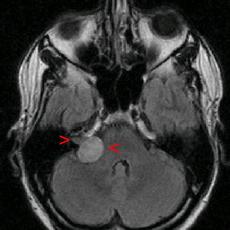
Acoustic neuroma (schwannoma) |
Acoustic neuroma (vestibular schwannoma)
- occur along the vestibular nerve (CN VIII); commonly in IAC or cerebellopontine angle
- benign tumour but growth leads to displacement & compression of local structures
- usually presents with unilateral progressive hearing loss
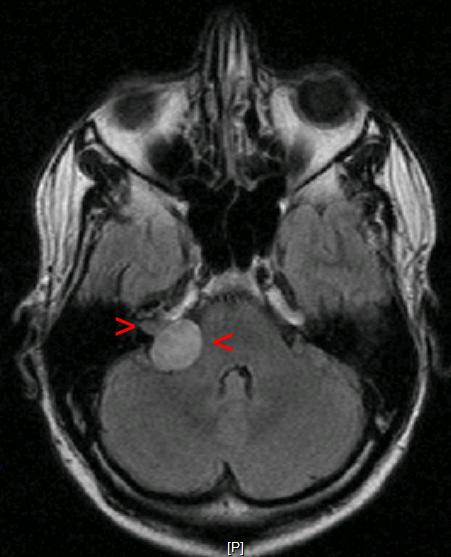
History
- include: duration, nature of onset, progression and which side(s) affected
- presence or absence of: tinnitus, vertigo, imbalance, otorrhoea, headache, facial nerve dysfunction
- and: head trauma, ototoxic exposure, occupational or recreational noise exposure and a family history of hearing impairment
Examination
- Otoscopy
- Nose, nasopharynx and oral exam +/- flexible nasoendoscopy if indicated
- Cranial nerve examination with special focus on V, VII and VIII
- Rinne and Weber tuning fork tests
Investigations
1. Audiometry
2. Imaging - most do not require imaging
- CT if suspect cholesteatoma
- MRI if asymmetric or unilateral SNHL (look for neural lesions)
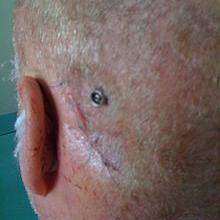
BAHA |
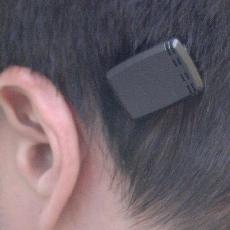
BAHA |

BAHA implant |
4 days post operation to insert the bone anchored hearing aid - the small titanium implant can be seen
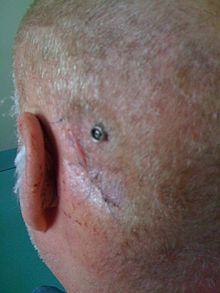
A removable BAHA sound processing unit in place (connects with titanium implant)
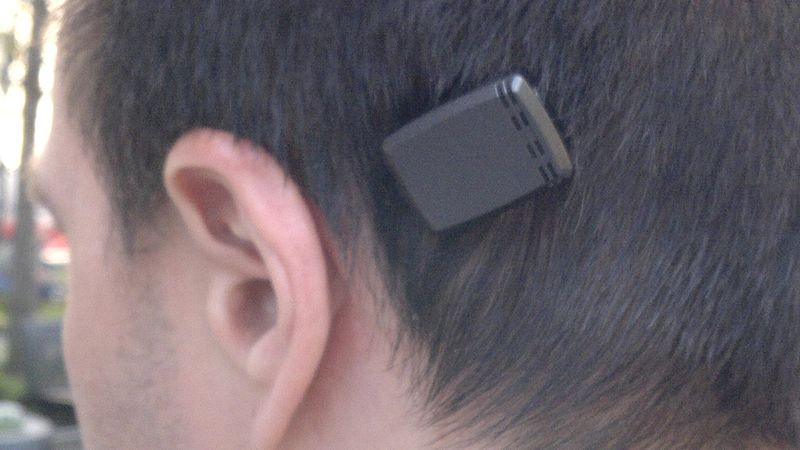
BAHA implant size
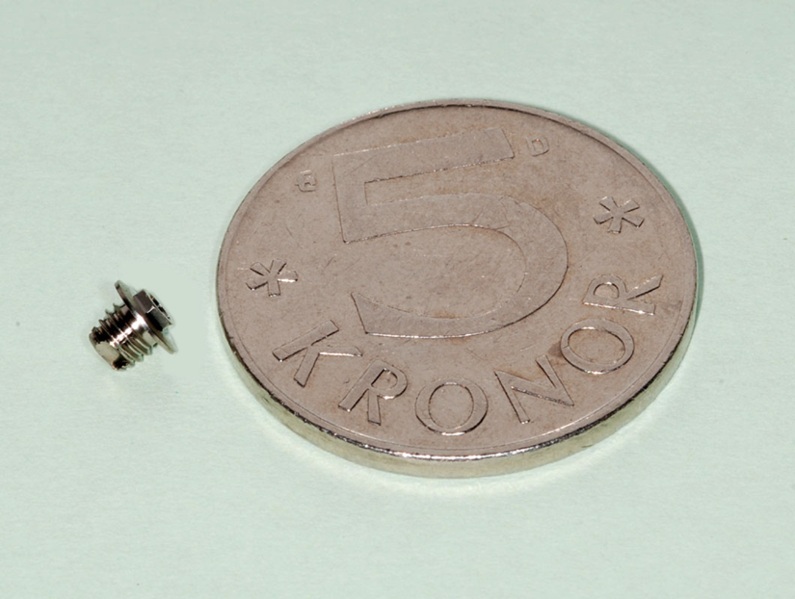
Management
1. Environment
- reduce back ground noise
- ensure good lighting on speaker's face etc.
2. Amplification
- hearing aids
- bone anchored hearing aid (BAHA)
3. Cochlear implants
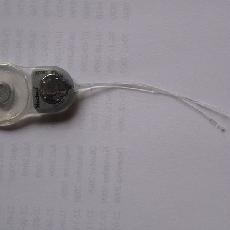
Cochlear implant |
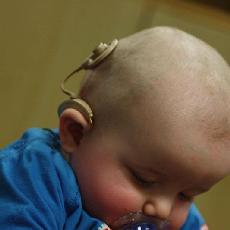
Cochlear implant |
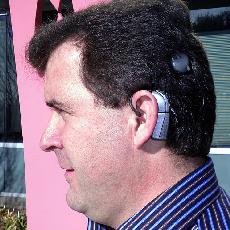
Cochlear implant |
Cochlear implant device
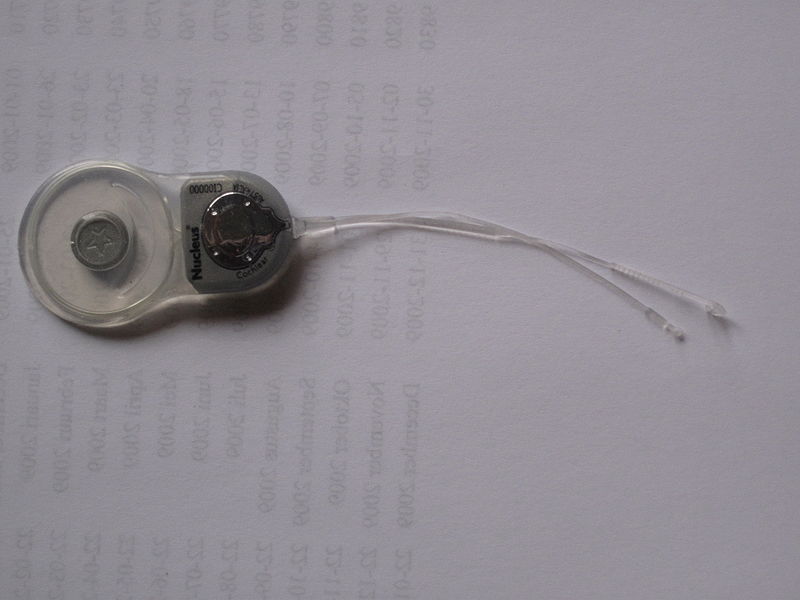
Infant with cochlear implant
Works by converting mechanical sound energy to electrical signals and stimulates the neurons of the cochlear nerve directly
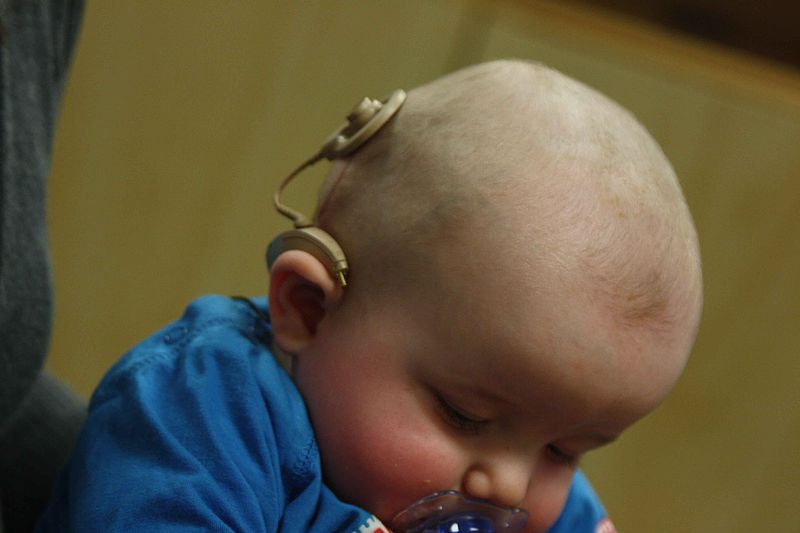
A microphone picks up acoustic information and transfers it to the processor
The processor converts the mechanical acoustic wave into an electrial signal
This electrical signal is transmitted through the implanted electrode to the auditory nerve
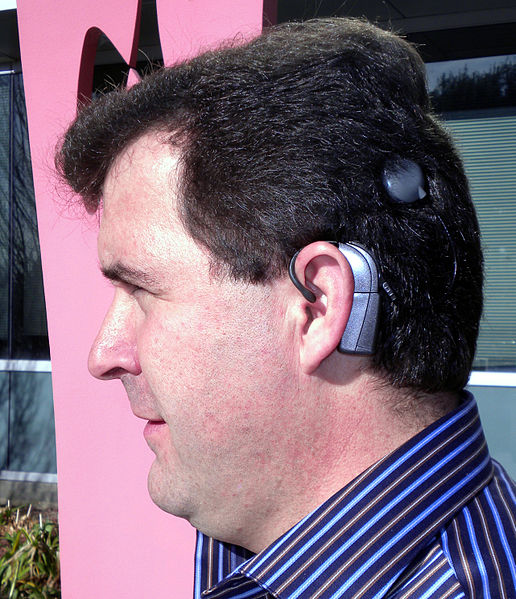
Presbycusis
.
Presbycusis is otherwise unexplained SNHL in the elderly - usually bilateral & symmetrical
.
Aetiology
- Genetic predisposition
- Noise trauma
- Diet, nutrition, ototoxin exposure
- Multifactorial age-associated changes:
- Central pathology: decreased cell population in auditory cortex with increased synaptic and information processing time
- Cochlear pathology: loss of hair cells and supporting cells
- CNVIII fibre loss
History
Progressive hearing loss - particularly worse with ambient noise
Ask about:
- occupation especially military, industry (high noise jobs)
- family history
.
Examination usually normal but performed to exclude other diagnoses
.
Investigations
Audiometry is diagnostic
Consider other tests e.g. imaging if suspect other diagnosis (e.g. unilateral hearing loss)
Management
Options:
1. Hearing aid
2. Assistive devices e.g. telephone amplifier, headsets for TV
3. Cochlear implant (reserved for profound hearing loss)
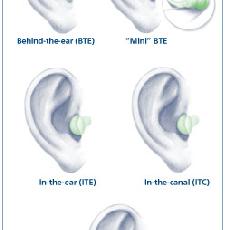
Hearing aid types |
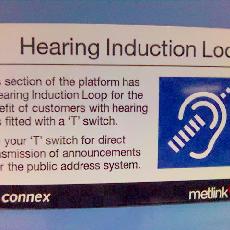
T-coil technology |
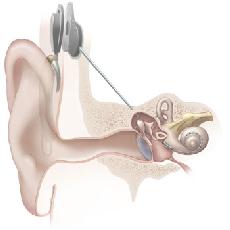
Cochlear implant |
Different types of hearing aids
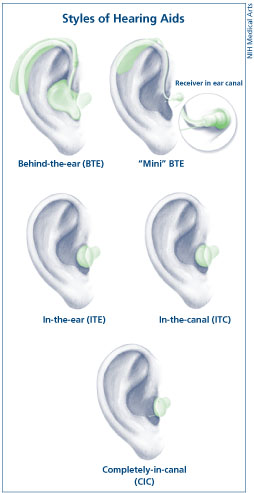
- Telecoils (T-coils) allow hearing aids to pick up sound from audio instruments such as mobile phones, lecture microphones, concert hall microphones
- It requires the room or carriage to have a loop of cable around it that generates a magnetic field
- The field carries audio-frequency currents that is picked up by the T-coil within the hearing aid
- Advantage is that it allows the microphone of the hearing aid to be switched off and therefore eliminates background (ambient) noise
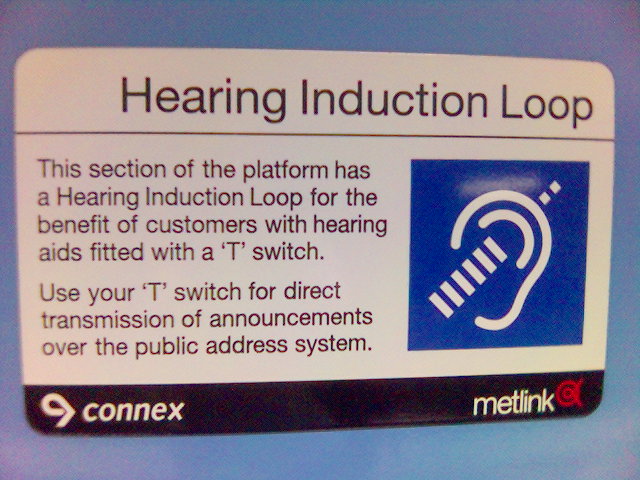
Cochlear implant
The microphone picks up acoustic information and transfers it to the processor
The processor converts the mechanical acoustic wave into an electrial signal
This electrical signal is transmitted through the implanted electrode to the auditory nerve
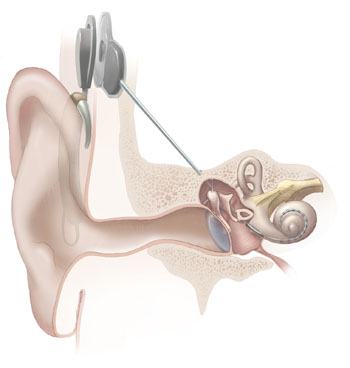
Investigations
Audiometry
Pure-tone audiometry is the most common test of hearing
The patient is asked to respond to sounds of decreasing intensity across the frequency range
Both air conduction and bone conduction can be tested
Tympanometry
A tympanometer presents a low frequency sound to the ear and measures the sound energy reflected from the eardrum
The eardrum is most floppy when the pressure on both sides of it is equal. If fluid is present in the middle ear, the eardrum is unresponsive to changes in pressure of the external ear canal and a flat tracing is observed
Tympanometry does not depend on major patient co-operation, so the test is quite useful in testing children for "glue ear" (otitis media with effusion)
| « Cholesteatoma | Vertigo » |



